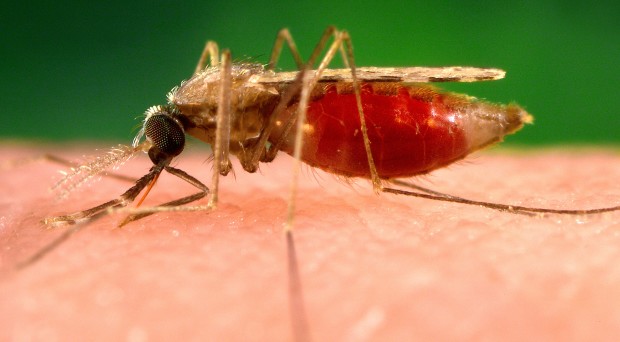
Malaria is an infectious disease transmitted through the bite of Anopheles mosquitoes. The single-celled parasites of the Plasmodium genus are the cause for this disease, and are further classified into over a hundred species of which five (Plasmodium falciparum, P. vivax, P. malariae, P. ovale, and P. knowlesi) primarily infect humans resulting in flu-like symptoms (including fever, headache, and nausea). The average incubation period is 2 weeks but can be many months for some species. P. falciparum causes the most severe and potentially fatal form of malaria if prompt treatment is not given. There have been some changes, however, in the diseases epidemiology over the last few years.
Incidence and Mortality
Malaria is endemic throughout the tropics and sub-tropics including in areas of Sub-Saharan Africa, Asia, the Caribbean, Oceania, and South America. The World Health Organization (WHO) reported 228 million malaria cases in 2018 with 23 million fewer cases from 2010. The WHO Africa Region contributes most malaria cases (93%) followed by South-East Asia (3.4%). Globally, the incidence rate declined between 2010 and 2018 from 71 to 51 cases per 1000 persons at risk.
In the past 2 years, four countries – Uzbekistan, Paraguay, Argentina Algeria were declared malaria free.
P. falciparum accounted for 99.7% and 50% of cases in Africa and South-East Asia, respectively, whereas P. vivax was the predominant species (75%) in the Americas. There were 405,000 malaria-associated deaths in 2018, which represents a decrease from 585,000 in 2010. Children under 5 years old remain the most vulnerable population and continue to account for two of every three malaria-associated deaths. Africa and South-East Asia have noted recent decreases in mortality from 2010 to 2018 (with Africa having the largest decline) and In the past 2 years, four countries – Uzbekistan, Paraguay, Argentina Algeria were declared malaria free.
While risk of malaria remains low in the Caribbean, there was a 20% increase of malaria in the Dominican Republic from 2017 to 2018 (360 to 438 cases), almost all of which being P. falciparum. Canada has about 500 cases of malaria annually imported by returning travelers and new migrants. According to the Public Health Agency of Canada, severe malaria cases requiring more intensive medical management are uncommon in Canada with about 14 cases per year and over the past decade, the national rate of malaria has gradually increased (from 1.1 cases per 100,000 people in 2005 to 1.7 cases per 100,000 people in 2016).
Transmission of Malaria in Non-endemic Areas
In recent years, there have been a few reports of locally transmitted malaria in non-endemic countries. From August to September of 2017 in France, 2 locally acquired cases of P. falciparum were reported. Both affected individuals attended the same wedding and had not recently travelled to a country where malaria was endemic. Upon investigation, it was found that a case of P. falciparum was diagnosed two weeks prior to the wedding in the same area the wedding was held in. This means that there was either local vector-borne transmission by resident Anopheles mosquitoes, or airport malaria in which an infected mosquito from an endemic country travelled along in an airplane or luggage to France.
In August 2018, there was also a report of delayed diagnosis of P. falciparum in a Moroccan man living in Tuscany, Italy. He was not suspected of having malaria initially as he did not have recent travel to an endemic country. During the summer, he had worked outdoors on the beach with sub-Saharan Africa travelers and reported having many mosquito bites. Although how he caught malaira was uncertain, the delayed diagnosis led to severe anemia, requiring treatment with artesunate and blood transfusion.
The distribution of malaria could change with climate change
Climate Change
Climate change can affect the survival of the malaria mosquito vector, Anopheles, and also influences the development of the Plasmodium parasite in the mosquito. Anopheles populate in warm and humid conditions while the P. falciparum parasite requires a temperature of over 20oC to complete its life cycle, and this is why tropical and sub-tropical regions have the highest burden of malaria.
However, the distribution of malaria could change with climate change. In regions where climate change results in decreased rainfall, a reduction in malaria could be expected. However, severe climate events leading to drought situations may be followed by extreme precipitation and flooding, which would lead to greater proliferation of mosquitoes and increased malaria transmission. With global warming, cooler parts of the world where malaria is not currently endemic but hospitable to Anopheles mosquitoes could also see an increase in mosquito population and higher probability of the parasite completing its life cycle leading to local transmission and epidemics.
Concerted global efforts around enhanced surveillance of endemic transmission and imported malaria cases, mosquito vector populations, climate change, and human mobility, coupled with innovative prevention and control strategies are critical to reduce malaria burden on a global scale.
Comments